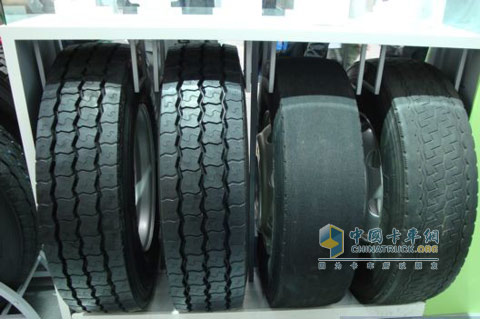The rising prices of upstream raw materials have made it impossible for domestic companies to shift to the consumer end. At the same time, it has been difficult to explore overseas markets. The plight has led to a decline in the profits of the Chinese tire industry and a deepening of losses.
Since 2009, due to the drought situation in Thailand, Malaysia and other places, the reduction of natural rubber supply, and the stimulation of loose monetary policies, the tire manufacturers' raw material procurement costs have risen sharply and tire prices have been forced to increase. Since January 1, 2010, Bridgestone has increased the price of Firestone and its sub-brand tires by 5%. It has again raised the tire prices in North America by 5% from April 1st. It has recently announced that it will start again in September. The retail price of sedan tires rose by 10%, and bus tires rose by 5%. However, domestic tire manufacturers do not have such a big move. Manufacturers can maintain their basic market share only by maintaining low-end prices. In 2010, the domestic rotation production price increased only once in March, with an average increase of 6%, which is much lower than Bridgestone’s price adjustment.

As the cost rise cannot be smoothly transferred to consumer terminals, the profits of the Chinese tire industry have shrunk. Statistics show that from January to May, the national tire company's profit rate was only 4%, with a loss of 23%. In this case, the production capacity continues to expand. Shandong Shuangxing Group is building a new 1 million sets of steel all radial tire project, and Huanghai Rubber Company has also started a 5 million sets of steel/steel tire technical transformation project. According to statistics, there are 40 domestic tire projects. In the next two years, 40 million sets of all-steel tires will be added, and 130 million sets of semi-steel tires will be newly added, which greatly exceeds the domestic demand level.
At the same time, many international tire manufacturers have stepped out of difficulties and returned to expansion, further increasing the competitive pressure on the development of the Chinese tire industry. In the first half of 2010, Bridgestone’s sales revenue increased by 15% year-on-year, Michelin’s sales revenue increased by 17%, and Goodyear’s losses substantially decreased. In addition, Pirelli of the German mainland and Italy achieved net profit, and Hankook Tire’s sales revenue achieved double-digit growth. Returning to the profitable zone, international tire manufacturers continue to work hard to gain share in emerging markets. Almost all of the top 10 in the world have started tire projects in China. Michelin has set up projects in Shenyang, Dongyang in Zhangjiagang, Sumitomo in Changsha, Hankook in Wuhan, Bridges in Tonghui, and the German mainland has new projects in Hefei.
The domestic market does not seem to bring much hope to the tire industry, and overseas markets are no longer providing a feast for Chinese tire companies. In developed markets, the European Union has increased its access level and the promulgated REACH standard almost blocks Chinese tires. In September 2010, in order to protect the interests of EU tire manufacturers, the EU will adjust the import tax imposed on Chinese tires and plan to impose a 22.3% import tax on Chinese tires exported to the EU for a period of five years. Another developed market, the United States, began implementing a three-year punitive tariff on imported cars and light truck tires from China in September 2009. As a result, China's exports of tires to the United States fell by 15% from January to May 2010, and the export value decreased by 27%.
Outside the developed markets, the situation of Chinese tire companies is also deteriorating. In June 2010, a South African court ruled that the anti-dumping investigation on China's tires would be reopened and requested the South African International Trade Commission to complete a new anti-dumping investigation within four months. In August 2010, the Indian government issued an interim review of anti-dumping duties on buses and trucks originating in China and Thailand, and it still considers China to be a non-market economy country and believes that imported products still have damage to the domestic industry.
These indications indicate that the Chinese tire industry, which consumes 70% of natural rubber, has encountered great difficulties. Such pressure will inevitably pass from the tires to the upstream, causing China's imports to decline. Customs data in recent months confirmed this.
Sanitary cleaning is a headache for everyone and every family. In order to clean up, I have tried large manual mops, spin dehydration mops, sweeping robots, steam mops, sweeping and mopping robots, and sweeping and mopping washing machines. vacuum cleaner etc. Each cleaning and sanitation tool has its own advantages and disadvantages. Ordinary mops are economical, but laborious, not easy to clean, etc. The sweeper is easy to use, but there are not many obstacles in the home, and the corners are not clean. Steam mop Stubborn stains are easy to clean, and the germicidal effect is good. But also a bit laborious. The vacuum cleaner can clean solid ash and granular ash. Most vacuum cleaners are larger in size and have a larger suction head. It is not easy to clean the dust in the corners. Can't be cleaned because of the size.
Mini handheld vacuum cleaner is a supplementary cleaning equipment for the above cleaning methods. A small and large suction portable vacuum cleaner can be used for corners, cars and even ordinary households.
Mini Handheld Vacuum Cleaner, Small vacuum cleaner, handheld vacuum
Guangxi Nanning King Green Smart Co., Ltd. , https://www.kinggreensmart.com